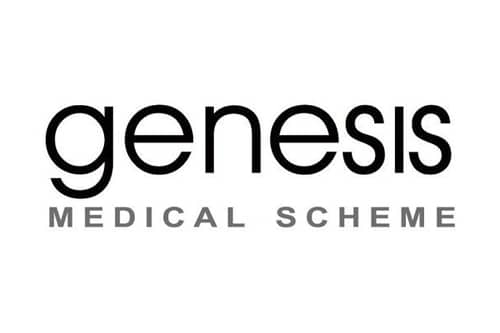X-rays
X-ray imaging, also known as radiography, is a common and essential diagnostic tool in the field of medicine. This technique uses X-rays, a form of electromagnetic radiation, to create images of the internal structures of the human body. In this comprehensive explanation, we will explore the principles of X-ray imaging, the procedure itself, the types of X-ray examinations, safety considerations, and its various applications in healthcare. Additionally, I will provide you with five medical references for further reading.
I. Introduction to X-ray Imaging:
X-ray imaging is a medical procedure that allows healthcare professionals to visualize the internal structures of the body, such as bones and soft tissues, without invasive techniques. It is a non-invasive and rapid method for diagnosing a wide range of medical conditions.
II. Principles of X-ray Imaging:
X-ray imaging is based on the principle that different tissues in the body absorb X-rays to varying degrees. When X-rays pass through the body and interact with these tissues, they produce a pattern of shadows on a detector, typically a digital sensor or film. These shadows are then processed to create detailed images that can aid in the diagnosis and treatment of various medical conditions.
III. The X-ray Procedure:
The X-ray procedure involves several key steps:
Patient Preparation: Before the X-ray examination, the patient may need to remove clothing or wear a hospital gown to avoid interference with the X-ray image. In some cases, patients may also need to remove jewelry or other metallic objects that could obstruct the image or scatter X-rays.
Positioning: The patient is positioned according to the specific requirements of the X-ray examination. This involves aligning the body part of interest with the X-ray machine and detector. Proper positioning is crucial to obtaining accurate images.
X-ray Machine: An X-ray machine, which includes an X-ray tube and a detector, is used to generate and capture X-ray images. The X-ray tube emits X-ray photons, which pass through the body and create the image on the detector.
X-ray Exposure: During the X-ray exposure, the X-ray machine is activated, and X-ray photons are directed through the body part of interest. These photons are absorbed by the tissues to varying degrees, creating the characteristic X-ray image.
Image Processing: The raw X-ray image is processed using specialized software to enhance contrast and make it suitable for interpretation by a radiologist or physician.
Radiologist Interpretation: A radiologist, a medical doctor with specialized training in interpreting medical images, reviews the X-ray images to make a diagnosis. They may also generate a formal report of their findings.
IV. Types of X-ray Examinations:
X-ray imaging encompasses a wide range of examinations, each tailored to visualize specific body structures. Common types of X-ray examinations include:
Chest X-ray: This is one of the most common X-ray procedures. It is used to evaluate the heart, lungs, and surrounding structures. Chest X-rays are frequently performed to diagnose conditions such as pneumonia, lung cancer, and heart disease.
Bone X-ray (Skeletal X-ray): These X-rays are used to examine the bones of the skeleton. They help diagnose fractures, bone infections, bone tumors, and degenerative bone diseases such as osteoarthritis.
Abdominal X-ray: Abdominal X-rays are used to evaluate the organs of the abdomen, including the stomach, liver, intestines, and kidneys. They can aid in the diagnosis of conditions like bowel obstructions and kidney stones.
Dental X-ray (Dental Radiography): Dental X-rays are essential for evaluating teeth, supporting bone, and the jaw. They help diagnose dental cavities, gum disease, impacted wisdom teeth, and orthodontic issues.
Fluoroscopy: Fluoroscopy is a real-time X-ray technique that allows dynamic visualization of internal structures, often used in procedures like barium swallow studies, angiography, and orthopedic interventions.
Mammography: Mammography is an X-ray technique specifically designed for breast imaging. It is a critical tool for breast cancer screening and diagnosis.
X-ray Angiography: This procedure involves injecting a contrast material into the blood vessels to visualize blood flow and identify abnormalities such as blockages, aneurysms, or vascular malformations.
C-arm X-ray: C-arm X-ray machines are often used in surgical and interventional radiology procedures to provide real-time imaging guidance during surgeries or minimally invasive interventions.
V. Safety Considerations:
While X-ray imaging is a valuable diagnostic tool, it does involve exposure to ionizing radiation, which can have harmful effects if not used responsibly. To ensure the safety of patients and healthcare professionals, various safety measures are implemented during X-ray procedures:
Minimizing Radiation Exposure: The X-ray machine is calibrated to deliver the lowest possible dose of radiation while still producing diagnostic images. This is done to reduce the potential risks associated with ionizing radiation.
Shielding: Patients are often provided with lead aprons or other shielding devices to protect parts of the body not involved in the examination from unnecessary radiation exposure.
Pregnancy and Pediatric Patients: Special care is taken with pregnant patients and pediatric patients to minimize radiation exposure. Pregnant patients may require alternative imaging methods, and pediatric patients receive lower doses of radiation based on their size and weight.
Regulations and Training: X-ray facilities must adhere to regulatory guidelines and staff must undergo specific training to ensure the safe and responsible use of X-ray equipment.
Image Justification: X-ray examinations should be justified based on clinical need. Physicians and radiologists must determine that the diagnostic benefits of the procedure outweigh the potential risks associated with radiation exposure.
ALARA Principle: ALARA stands for “As Low As Reasonably Achievable.” This principle emphasizes the importance of minimizing radiation exposure to the lowest levels reasonably possible while still obtaining useful diagnostic information.
VI. Applications of X-ray Imaging:
X-ray imaging has a wide range of applications in healthcare and is an essential diagnostic tool in various medical specialties. Some key applications include:
Trauma and Orthopedics: X-ray imaging is invaluable for diagnosing fractures, joint dislocations, and orthopedic conditions such as osteoarthritis and scoliosis.
Cardiology: X-rays are used in cardiology for procedures like angiography to visualize coronary arteries, diagnose heart conditions, and guide interventions like stent placement.
Pulmonology: Chest X-rays are vital for evaluating lung health and diagnosing conditions such as pneumonia, lung cancer, and pulmonary embolism.
Dentistry: Dental X-rays are essential for diagnosing dental problems, including cavities, gum disease, and impacted wisdom teeth.
Gastroenterology: Abdominal X-rays are used to assess the digestive system, detect bowel obstructions, and identify gastrointestinal conditions.
Mammography: Mammography is a critical tool for breast cancer screening and early detection.
Emergency Medicine: X-rays play a crucial role in diagnosing injuries and conditions in emergency departments, such as head trauma and internal injuries.
Radiation Oncology: X-ray imaging is used to plan radiation therapy treatment for cancer patients.
VII. Medical References:
For further reading on X-ray imaging principles, procedures, safety, and applications, the following medical references are valuable sources:
Radiologic and Imaging Nursing (Radiological Society of North America): https://www.rsnajournals.org/page/radimag/author-information
X-rays and X-ray Safety (U.S. Food and Drug Administration): https://www.fda.gov/radiation-emitting-products/resources-you-radiation-emitting-products/producing-medical-x-rays
Radiologic Evaluation of Common Chest Diseases (American Family Physician): https://www.aafp.org/afp/2009/0715/p297.html
Radiologic Imaging Techniques (Radiologic Technology): https://www.asrt.org/docs/default-source/educators/curriculum/curriculum-radiologic-imaging-techniques-2017.pdf
Radiation Protection and Dose Management in Medical Imaging: A Primer (Radiographics): https://pubs.rsna.org/doi/full/10.1148/rg.292175133
These references provide in-depth information on X-ray imaging principles, procedures, safety measures, and various applications in the field of medicine.
Medical Aids that cover X-rays in South Africa
| 🔎 Provider | ▶️ Covers x -rays | ⏩ Top Plan Covering X – Rays |
|---|---|---|
| 🥇 Bestmed | ✅ Yes | Beat 3 |
| 🥈 Bonitas | ✅ Yes | BonFit |
| 🥉 Cape Medical | ✅ Yes | HealthPact Select |
| 🏅 CompCare | ✅ Yes | NETWORX |
| 🎖️ Discovery Health | ✅ Yes | Discovery Health Essential Smart |
| 🏆 FedHealth | ✅ Yes | FlexiFED 4 |
| 🥇 Genesis | ✅ Yes | Med 200 |
| 🥈 Sizwe Hosmed | ✅ Yes | Platinum Enhanced |
| 🥉 KeyHealth | ✅ Yes | Gold |
| 🏅 Makoti Medical | ✅ Yes | Primary Option |
| 🎖️ Medihelp | ✅ Yes | MedElite |
| 🏆 Medimed | ✅ Yes | Alpha |
| 🥇 MedShield | ✅ Yes | PremiumPlus |
| 🥈 Momentum | ✅ Yes | Summit |
| 🥉 Suremed | ✅ Yes | Navigator |
| 🏅 Thebemed | ✅ Yes | Fantasy |


































